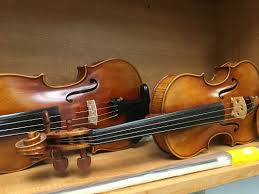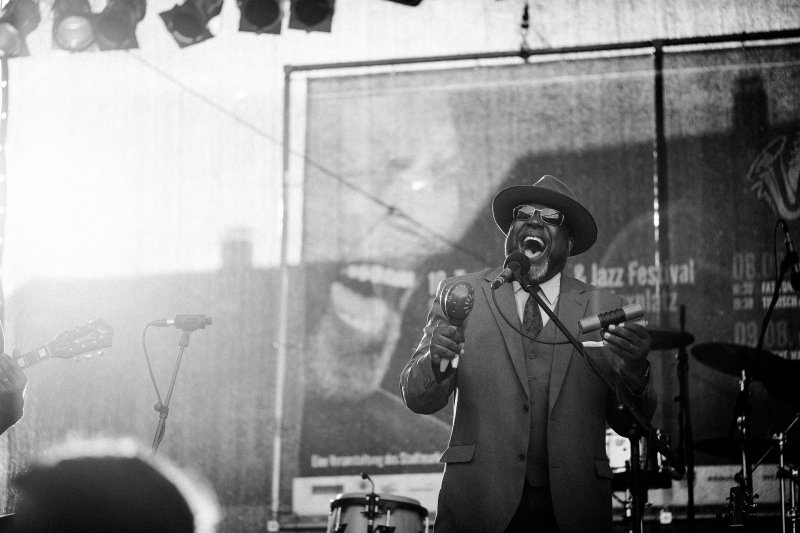If New York to the 2nd floor. 19th century
became the center of music. performance, then music-clearance. Boston remained the center. Here the first Amer. music magazine “Journal of music” (1852-81, founded by the priest and amateur music critic J. S. Dwight), which influenced the formation of the muses. American taste. Music began to develop. the science; works on the history of music by A. W. Thayer, F. L. Ritter, and others were published. prof. composite. school (the so-called Boston or Second New England), which was not yet national in spirit, but already represented by Amer. composers; its main the trend was the desire for an academic style, harmony and completeness of forms and high professionalism.

Representatives of this school (they were called “Boston Classicists”) were attracted by German music. masters of that time, especially I. Brahms. The head of the Boston school is a professor at Harvard University J. N. Payne (studied in Germany), author of orc. prod. (many were performed by American orchestras, including the 2nd symphony, 1880). Among his younger contemporaries (including his students) are A. Foote (“Night piece” for flute and strings, piano quintet), D. G. Mason (symphony No 3, “Lincoln”, string quartet in Negro . themes), X. Parker (cantata “Hora novissima”), J. W. Chadwick (symphonic suite), F. Sh. – “Pipe of Desires”, 1909), as well as C. M. Lofler (“Memories of Childhood” and “Pagan Poem” for symphonic orchestra), E. B. Hill (symphony No. 3, prelude for orchestra), D. Buck , W. W. Gilchrist, F. G. Gleason, et al. (ch. arr. symphonic, chamber-instrumental and cantata-oratorio, as well as operas) testified to the composer’s mastery of the authors, reflected their creative work. individuality.
A special place among the composers of this period was occupied by E. McDowell, a pianist. craftsmanship and production to-rogo gained fame not only in America, but also in Europe. A typical romantic, he strove for his work and musical societies. activities to promote the spiritual development of the Amer. society. However, it also means. compositions, including fp. concertos, “Indian Suites” for orchestra, compositions for piano. marked by a strong influence of late German. romanticism. Of great importance for the development of Amer. composers had the work of A. Dvorak in the USA, who in 1892 headed the Nat. conservatory in New York (founded in 1885; among his students – R. Goldmark, X. W. Loomis, X. R. Shelley). He drew the attention of Amer. composers on those opportunities, to-rye gives the use of nat. music folklore (created in the USA the string quartet F-dur, 1892, and the symphony “From the New World”, 1893; he introduced black and Indian rhythms and melodic turns into them).
In con. 19th century for US music,
the so-called. folklore direction, the purpose of which was the study and use of rich and diverse muses in composer’s work. folklore of the country. It was headed by A. Farwell, composer, teacher and society. activist, who united around the publishing house “Wa-Wan” (produced the work of Amer. authors) several. dozens of composers; among them – G. F. B. Gilbert (a student of McDowell), the author of the genre pictures “Americanesque”, “Comic Overture” in Negro. themes and “Dancing in Congo Square” for orchestra. The folklore direction also includes the work of the comp. C. W. Cadman, C. S. Skilton, A. Navin (they used Indian musical folklore), E. Stillman-Kelly, J. Powell, M. Howe (Anglo-Celtic folklore), and others. Folklore elements appeared in their creativity in various combinations and translated into music decomp. styles, but generally traditional. music the lawsuit in their country was interpreted by them as something exotic – it was not artistically comprehended deeply enough.
From the 2nd floor. 19th century in the United States actively developed decomp. forms of music t-ra. In 1866 there was a post in the Niblo Garden store in New York. the play “Black Crook” with songs and dances, in which, according to some historians of the Amer. music, features appeared for the first time, which later became specific. for a musical – a type of stage. movement, the interaction of singing and plasticity, music. language, etc.
In the so-called. cheerful nineties (“gay nineties”; the name characterized the period of economic prosperity of the USA – the rapid growth of cities, the atmosphere of entrepreneurship, optimism – the hallmarks of American society in the late 19th century), characteristic forms of European society became widespread. and Amer. stage. Among them, the so-called. extravaganza (borrowed from French pop music, contains many ballet numbers), revues, shows, and other types of performances, plot and plotless, consisting of woks. and dance. numbers, pantomime and acrobatics. They were given both in the new luxurious music halls and in the premises of second-rate theaters and saloons, their specificity. a special feature was a group of dancers arranged in a line – “show girls”.
Along with the spread of European operettas (primarily English) developed the traditions of Amer. comic operas (produced by W. Spencer, R. De Kovin, Susa, 1880-90s). Their interaction was reflected in the work of those who moved to the United States from dec. European countries comp. AT.
Herbert (“Cranky Marietta”, 1910), Z. Romberg (“The Prince-Student”, 1924), R. Friml (“Rose-Marie”, 1924). Among the leading representatives of the Amer. music t-ra early 20th century – directors and artists F. Ziegfeld, T. Pastor, F. Bryce, E. Rayet.
At the turn of the 19th-20th centuries. in the South of the United States, peculiar forms of the Negro have developed. music expressions – blues and ragtime.
Blues is a type of solo singing improvised. a character that is distinguished by the originality of the modal structure (“blues intonations”), phrasing; the melody and (verbal) lyrics of the blues reflect the depth of personal experience and are often associated with nostalgia. mood. The blues, in which certain elements of the spiritual were developed, became a qualitatively new phenomenon in Afro-Amer. traditions. Born in rural blacks. communities of the South, it spread up the Mississippi and formed several. main varieties, from 20th century influenced almost all types of music in the United States. Introduced into the sphere of commerce. music, the blues began to be characterized by a special (12-bar) structure and a certain harmonic. scheme, to-rye served as the basis for improvisations from sheets.

Of the representatives of the so-called. archaic Blues about the most famous were “Big Bill” Broonzy, “Blind Lemon” Jefferson. Among the authors of the so-called. urban (prof.) blues – W. K. Handy (“St. Louis blues”, “Joe Turner blues”, etc.); among the performers – G. “Ma” Rainey, B. Smith, X. Ledbetter (Leadbelly) and others; an instrumental variety of blues – boogie-woogie (associated with the dance that later gained immense popularity) was developed by pianists J. Yancey, A. Emmons and others. in the South of the USA there was a ragtime, specific. style of playing on the fp., osn. features to-rogo – syncopation, elements of polyrhythm and characteristic accentuation associated with permanent insignificant. time shifts of the right and left hands relative to each other (the influence of the Negro style of playing the banjo and the kek-walk dance common in the South, in which the Negroes parodied the “refined” manners of their masters – white planters).
The pianist-composer S. Joplin, nicknamed the “king of ragtime” (the opera “Trimonish”, piano pieces “Peg of the Maple Leaf Club”, “Easy Fortunates”, etc.), as well as F. “Jelly Roll” Morton, gained fame , J.S. Scott and others. Under the influence of ragtime, the Harlem school of jazz playing on the fp was formed. (T. “Fets” Waller, J.P. Johnson, Y. Blake and others). Developed later Orc. a variety of ragtime had a great influence on the music of wind bands (Susa marches, etc.), popular music, and especially jazz. The characteristic features of ragtime were used by I. F. Stravinsky, P. Hindemith, C. Ives and other composers. Interest in ragtime revived in the 1970s, many played in the manner of ragtime. jazz. and estr. musicians; in New England. Conservatory in Boston created an ensemble that performs music in the style of ragtime (in 1978 performed in the USSR).
